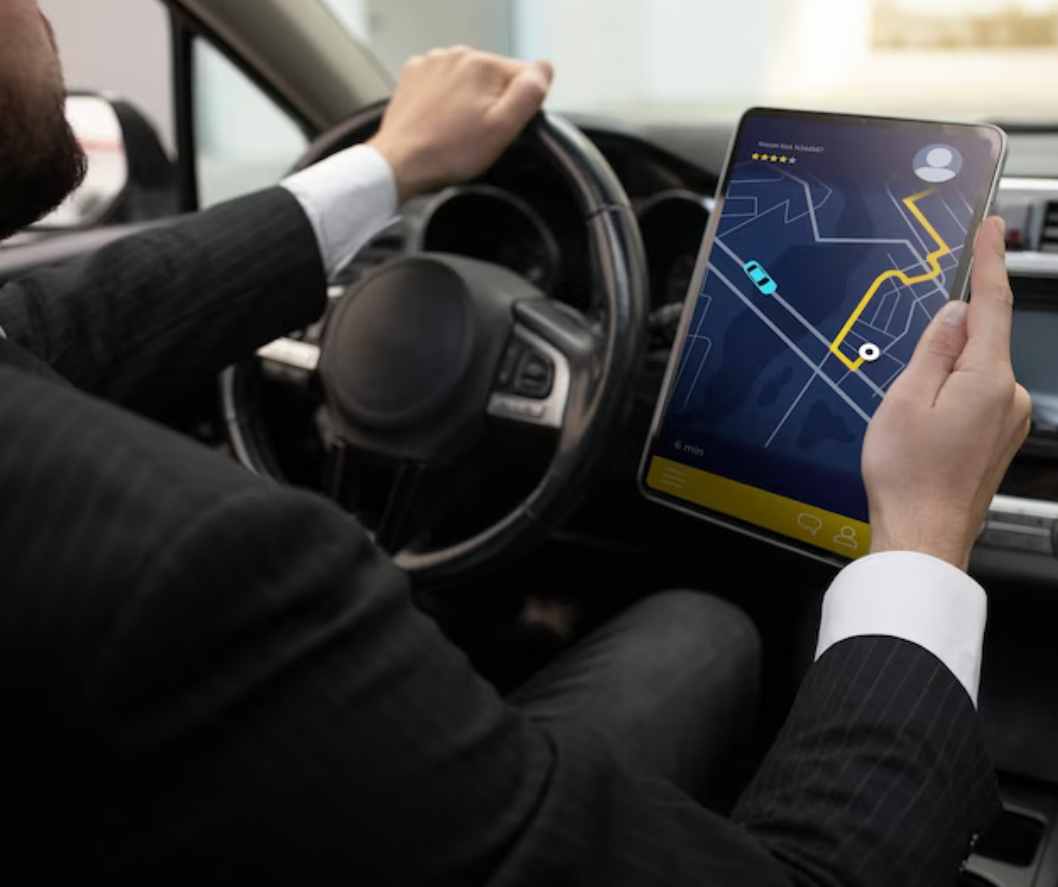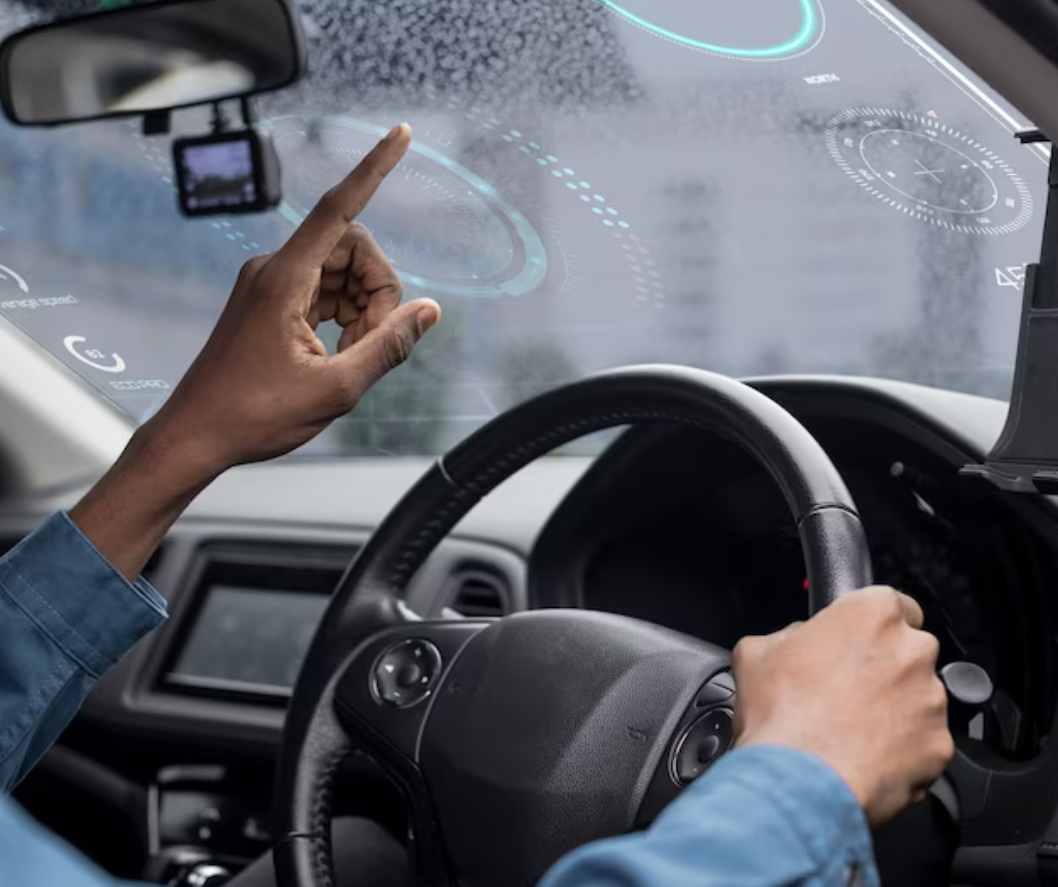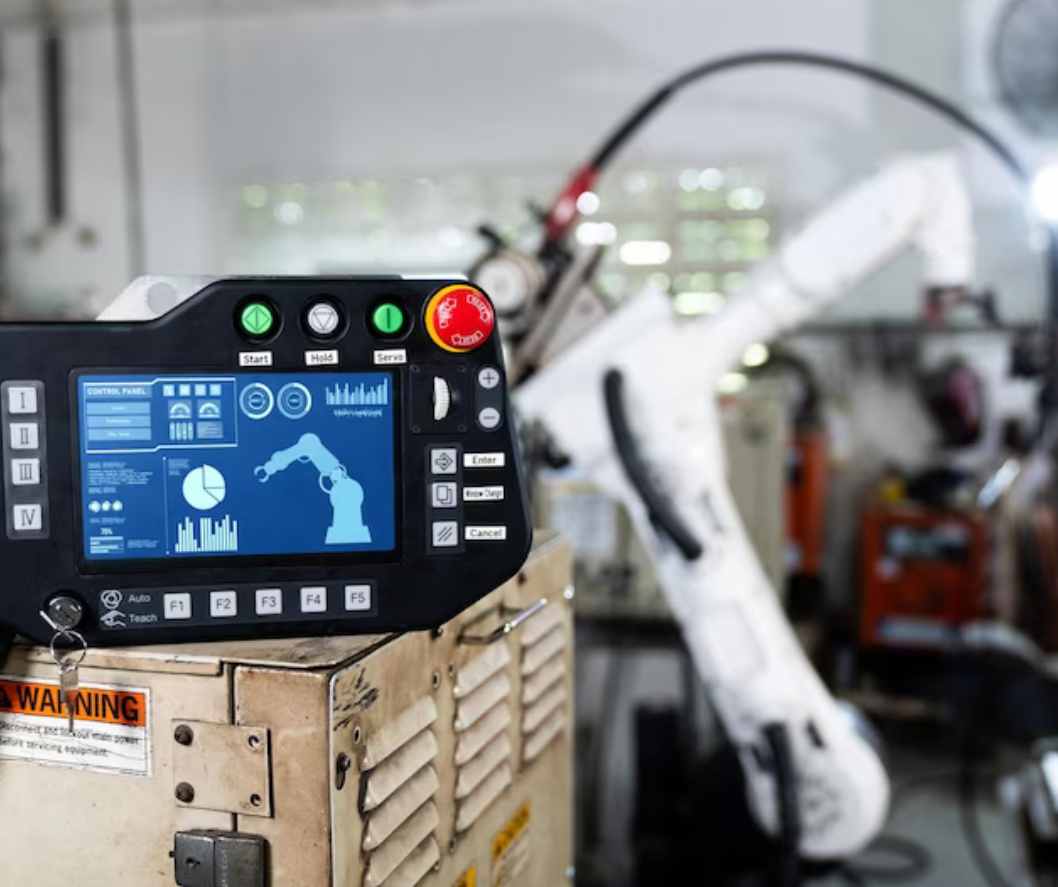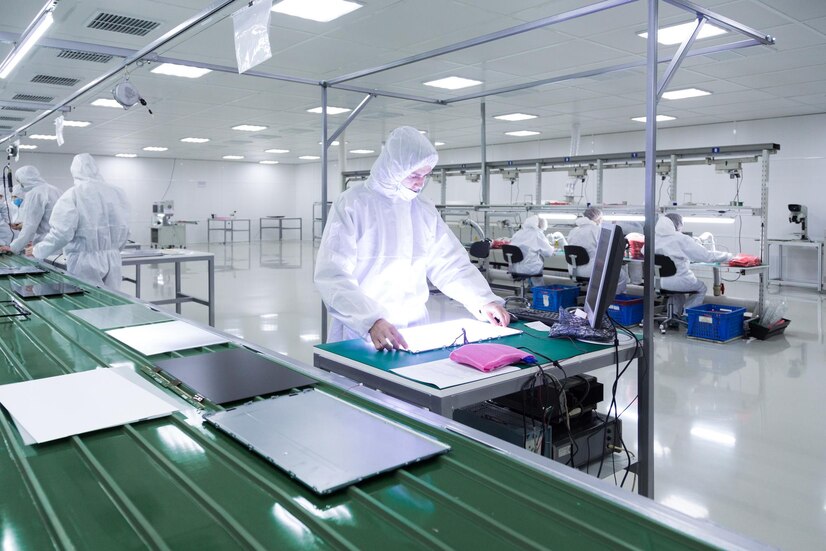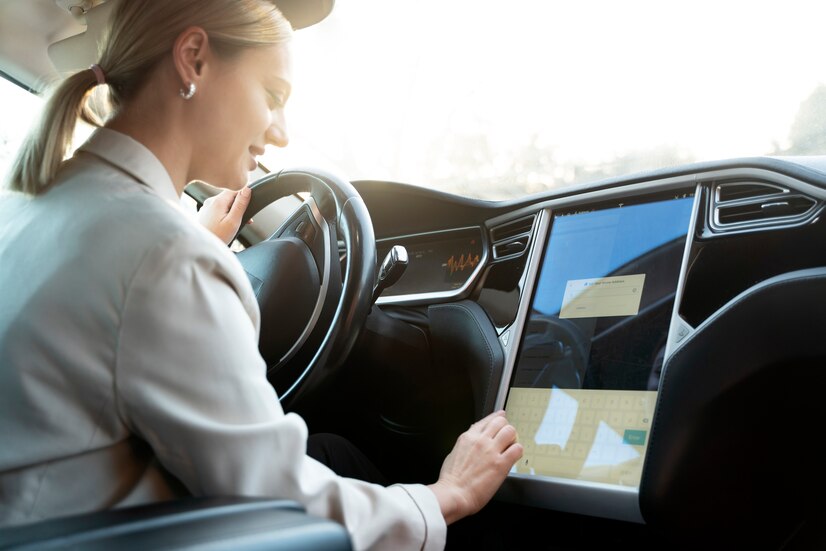
Beyond the Road: The Next Generation of Vehicle Technology
The automotive industry is undergoing a transformative journey in an era of rapid technological advancement. The once-familiar road gives way to a new landscape where innovation is the driving force. From autonomous driving systems to sustainable materials and augmented reality navigation to quantum computing, the next generation of vehicle technology promises to reshape how we interact, move in, and perceive automobiles. This article delves into the various facets of this technological evolution, exploring each topic in detail and providing real-life examples that illustrate the profound impact of these advancements.
The Evolution of Automotive Technology
The automotive landscape has witnessed a remarkable evolution over the years, propelled by technological breakthroughs that have redefined mobility and convenience. As we delve into the next generation of vehicle reviews, let’s uncover the key areas shaping the future of automobiles.
Autonomous Driving Systems
Understanding Autonomous Vehicles
Autonomous vehicles, commonly called self-driving cars, are at the forefront of automotive innovation. These vehicles utilize a combination of sensors, cameras, radars, and advanced algorithms to navigate and interact with the environment without human intervention. Companies like Tesla, Waymo, and Uber have made significant strides in developing autonomous driving systems.
Levels of Autonomy
Autonomous vehicles operate on different levels of autonomy, ranging from Level 0 (no automation) to Level 5 (full automation). Each level represents a different degree of control and intervention required from the driver. For instance, Level 3 vehicles can handle certain driving tasks independently but may require human intervention in specific scenarios.
Benefits of Autonomous Driving
The potential benefits of autonomous driving are multifaceted. Improved road safety, reduced traffic congestion, and enhanced accessibility for individuals with disabilities are among the advantages. Additionally, autonomous vehicles have the potential to make transportation more efficient and environmentally friendly by optimizing routes and reducing fuel consumption.
Challenges and Concerns
While the promise of autonomous driving is exciting, several challenges must be addressed before widespread adoption can occur. Technical hurdles related to complex urban environments, ethical dilemmas in decision-making algorithms, and legal and regulatory frameworks pose significant obstacles. Moreover, cybersecurity concerns underscore the importance of developing robust safeguards against potential hacks.
Electric and Hybrid Propulsion
Rise of Electric Vehicles (EVs)
Electric vehicles have gained significant traction recently as a sustainable alternative to traditional internal combustion engine (ICE) vehicles. Companies like Tesla, Nissan, and Chevrolet have led the charge in popularizing EVs. These vehicles are powered by electric motors that run on electricity stored in rechargeable batteries.
Advantages of Electric Propulsion
The advantages of electric propulsion are manifold. Zero tailpipe emissions, reduced dependence on fossil fuels, and lower operating costs are some of the compelling reasons to embrace EVs. Furthermore, electric vehicles offer instant torque and a quieter driving experience, enhancing overall comfort.
Hybrid Technology Explained
Hybrid vehicles combine internal combustion engines with electric propulsion systems. This synergy results in improved fuel efficiency and reduced emissions. Hybrid technology comes in various forms, including parallel hybrids, series hybrids, and plug-in hybrids, each offering distinct benefits regarding efficiency and driving dynamics.
Environmental Impact and Sustainability
The environmental benefits of electric and hybrid vehicles extend beyond tailpipe emissions. Reducing greenhouse gas emissions and pollutants contributes to cleaner air and a healthier environment. Additionally, advancements in battery technology and recycling processes are enhancing the overall sustainability of these vehicles.
Connected Car Technology
The Concept of Connected Cars
Connected car technology is revolutionizing how vehicles interact with each other and the surrounding infrastructure. By leveraging internet connectivity and onboard sensors, cars can communicate with other vehicles, traffic signals, and pedestrians, creating a dynamic and interconnected ecosystem.
In-Car Infotainment Systems
Modern vehicles have sophisticated infotainment systems that offer navigation, entertainment, and communication features. These systems often feature touchscreens, voice recognition, and smartphone integration, providing drivers and passengers with a seamless and engaging experience.
Vehicle-to-Vehicle (V2V) Communication
Vehicle-to-vehicle communication enables cars to share important information with nearby vehicles, such as location, speed, and braking status. This real-time data exchange enhances safety by enabling vehicles to anticipate and react to potential collisions or hazards.
Enhancing Safety and Convenience
Connected car technology enhances both safety and convenience on the road. Features like automatic emergency braking, lane departure warnings, and adaptive cruise control contribute to accident prevention and mitigation. Additionally, remote vehicle diagnostics and maintenance alerts streamline the ownership experience.
Advanced Driver Assistance Systems (ADAS)
Introduction to ADAS
Advanced Driver Assistance Systems (ADAS) encompass a range of technologies designed to assist drivers and enhance safety. These systems utilize sensors, cameras, and algorithms to monitor the vehicle’s surroundings and provide real-time feedback and interventions.
Role in Preventing Accidents
ADAS technologies play a pivotal role in preventing accidents and reducing the severity of collisions. For instance, lane departure warning systems alert drivers when they unintentionally drift out of their lane, while forward collision warning systems provide timely alerts about potential front-end collisions.
Key ADAS Features
Specific ADAS features include adaptive cruise control, which maintains a safe following distance from the vehicle ahead, and automatic emergency braking, which can independently apply the brakes to prevent or mitigate collisions. These features collectively contribute to a safer driving environment.
The Future of ADAS
The future of ADAS holds the promise of further innovation. As sensors and algorithms become more advanced, vehicles will be capable of more complex maneuvers, such as navigating urban environments and handling complex intersections.
Smart Materials and Manufacturing
Evolution of Vehicle Construction
The way vehicles are constructed is evolving, thanks to the integration of smart materials. These materials possess properties that respond to external stimuli, enabling them to adapt and enhance vehicle performance.
Role of Smart Materials
Smart materials like shape-memory alloys and self-healing polymers are revolutionizing vehicle manufacturing. These materials can change shape, absorb impacts, and even repair minor damage, improving safety and longevity.
Impact on Vehicle Safety and Efficiency
The incorporation of smart materials in vehicle design has the potential to enhance safety significantly. For instance, materials that can absorb and dissipate energy upon impact can mitigate the force of collisions, reducing the risk of injury to occupants.
3D Printing in Automotive Manufacturing
3D printing technology has introduced a new dimension to automotive manufacturing. 3D printing allows for creation of complex and customized parts with reduced waste and lead times, paving the way for more efficient production processes.
Sustainable and Eco-Friendly Innovations
Bio-Based Materials in Cars
The automotive industry is embracing bio-based materials derived from renewable sources. These materials, including bioplastics and natural fibers, offer a sustainable alternative to traditional petroleum-based plastics, reducing the carbon footprint of vehicles.
Energy Recovery Systems
Energy recovery systems, such as regenerative braking, capture and store energy typically lost during braking. This stored energy can power various vehicle systems, reducing energy wastage and improving overall efficiency.
Solar-Powered Vehicles
Solar panels integrated into the exterior of vehicles can harness sunlight to generate electricity. While solar power alone might not fully power a vehicle, it can contribute to extending the range of electric vehicles and reducing dependency on charging infrastructure.
Promoting Environmental Responsibility
Sustainable and eco-friendly innovations are environmentally responsible and resonate with consumers who prioritize sustainability. The automotive industry can contribute to a greener and more sustainable future by adopting these innovations.
Human-Machine Interface (HMI)
Importance of HMI in Vehicles
The Human-Machine Interface (HMI) is the point of interaction between drivers, passengers, and vehicle systems. An intuitive and user-friendly HMI ensures safe and seamless interactions within the vehicle.
Voice and Gesture Controls
Voice recognition and gesture controls are becoming increasingly prevalent in modern vehicles. These interfaces allow drivers to control various functions without taking their hands off the steering wheel or their eyes off the road.
Augmented Reality Displays
Augmented reality (AR) displays overlay digital information onto the real-world view, enhancing navigation, entertainment, and safety. For example, AR can provide navigation instructions directly on the windshield, minimizing the need to glance at a separate screen.
Designing User-Friendly Interfaces
Designing an effective HMI involves understanding user behavior and preferences. Interfaces should be intuitive, responsive, and distraction-free, ultimately enhancing the driving experience.
Advanced Energy Storage Solutions
Evolution of Battery Technology
Advancements in battery technology have been instrumental in driving the adoption of electric vehicles. With their high energy density and rechargeability, lithium-ion batteries have become the industry standard.
Solid-State Batteries
Solid-state batteries are a promising advancement in energy storage. These batteries replace the liquid electrolyte in traditional lithium-ion batteries with a solid electrolyte, leading to higher energy density, faster charging times, and improved safety.
Ultra-Fast Charging Networks
The establishment of ultra-fast charging networks is critical for widespread EV adoption. These networks enable rapid charging, allowing drivers to recharge their vehicles in minutes rather than hours.
Extending EV Range
Extending the range of electric vehicles is essential to alleviate “range anxiety” – the fear of running out of battery power. Innovations in battery chemistry and energy management systems contribute to longer driving ranges on a single charge.
Future of Mobility Services
Rise of Ride-Sharing and Carpooling
The rise of ride-sharing and carpooling services is reshaping urban mobility. Platforms like Uber and Lyft have transformed the way people move around cities, reducing the need for personal vehicle ownership.
Autonomous Ride-Hailing Services
Autonomous ride-hailing services are on the horizon, promising a driverless and convenient transportation experience. These services have the potential to improve accessibility, especially for individuals who are unable to drive.
Mobility as a Service (MaaS) Platforms
Mobility as a Service (MaaS) platforms integrate various modes of transportation into a single, user-friendly app, such as public transit, ride-sharing, and bike-sharing. This approach offers seamless and personalized mobility solutions.
Redefining Urban Transportation
The future of mobility services holds the promise of reducing traffic congestion, minimizing parking demand, and decreasing the overall environmental impact of transportation. As cities become smarter and more connected, mobility solutions will be crucial in enhancing urban living.
Cybersecurity in Vehicles
Growing Cybersecurity Concerns
As vehicles become more connected and autonomous, they also become susceptible to cybersecurity threats. The increasing reliance on software and communication networks exposes vehicles to potential hacks and unauthorized access.
Vulnerabilities in Connected Cars
Connected cars are vulnerable to various cybersecurity risks, including remote hacking, data breaches, and identity theft. Malicious actors could potentially compromise safety-critical systems, leading to hazardous situations on the road.
Preventive Measures and Solutions
The automotive industry is investing in robust security protocols and encryption techniques to mitigate cybersecurity risks. Regular software updates and collaboration between manufacturers, researchers, and regulators are essential in safeguarding vehicles.
Collaborative Efforts for Safer Vehicles
Cybersecurity is a shared responsibility that involves automakers, technology providers, and regulatory bodies. Collaborative efforts are crucial for establishing industry standards and best practices that ensure the security and privacy of vehicle systems.
Artificial Intelligence in Vehicles
Integration of AI Systems
Artificial Intelligence (AI) is revolutionizing the automotive industry by enabling vehicles to process data, make decisions, and interact with their environment in more sophisticated ways. AI systems power everything from advanced driver assistance to infotainment.
AI-Powered Personal Assistants
AI-powered personal assistants, like those in vehicles like the Tesla Model 3 and the Mercedes-Benz MBUX, enhance the driving experience. These assistants can perform tasks such as adjusting climate settings, providing real-time traffic updates, and answering queries.
Predictive Maintenance with AI
AI is also used for predictive maintenance, where vehicles analyze data from various sensors to predict when components may fail or require servicing. This proactive approach reduces downtime and improves vehicle reliability.
Enhancing User Experience
AI enhances the user experience by personalizing features and functions based on individual preferences. From adjusting seating positions to recommending entertainment options, AI tailors the driving experience to each user.
Biometric Vehicle Access
Biometric Authentication Methods
Biometric authentication methods, such as fingerprint recognition and facial scanning, are becoming increasingly common for vehicle access and ignition. These methods offer enhanced security by using unique biological characteristics.
Secure and Convenient Vehicle Access
Biometric vehicle access eliminates the need for traditional keys or key fobs. Instead, the vehicle recognizes the driver’s biometric data, granting access and enabling ignition with a touch or glance.
Fingerprint and Facial Recognition
Fingerprint and facial recognition technologies are highly accurate and difficult to replicate, making them secure options for vehicle access. These methods also enhance convenience by eliminating the need to carry physical keys.
Advancements in Biometric Security
As biometric technology continues to evolve, it may incorporate additional layers of security, such as multi-factor authentication and behavioral recognition, further enhancing the protection of vehicles and their occupants.
Air Quality and Health Monitoring
In-Car Air Purification Systems
In-car air purification systems are designed to improve the air quality inside the vehicle cabin. These systems use filters and sensors to remove allergens, pollutants, and odors, creating a healthier and more comfortable environment.
Monitoring Driver and Passenger Health
Advanced sensors can monitor driver and passenger health metrics, such as heart rate and respiratory patterns. This data can detect signs of fatigue, stress, or other health-related issues, ensuring a safer driving experience.
Implications for Allergies and Respiratory Conditions
In-car air purification systems are especially beneficial for individuals with allergies and respiratory conditions. By removing allergens and pollutants, these systems help create a more pleasant and health-conscious driving environment.
Creating Health-Conscious Vehicle Interiors
Air quality and health monitoring are integral components of creating health-conscious vehicle interiors. As vehicles become more connected and aware, they can actively contribute to the well-being of their occupants.
Future of Design and Aesthetics
Shifting Vehicle Aesthetics
The evolution of vehicle technology is reshaping vehicle design aesthetics. The need for improved aerodynamics, energy efficiency, and space optimization influences how vehicles are styled.
Influence of Electric Powertrains
The transition to electric powertrains is having a profound impact on vehicle design. Electric vehicles often feature streamlined, futuristic designs that maximize efficiency and optimize aerodynamics.
Incorporating Futuristic Design Elements
Futuristic design elements, such as LED lighting, sleek contours, and minimalistic interiors, are becoming prominent features of modern vehicles. These elements not only enhance aesthetics but also contribute to functionality.
Balancing Functionality and Form
While aesthetics play a vital role, vehicle design must also prioritize functionality. Designers are tasked with balancing creating visually appealing vehicles and incorporating practical features that enhance the overall driving experience.
Augmented Reality in Navigation
AR Navigation Systems
Augmented Reality (AR) transforms navigation by overlaying digital information onto the real-world view through a heads-up display or the windshield. AR navigation provides visual cues that guide drivers to their destinations.
Enhancing Real-time Navigation
AR navigation enhances real-time navigation by directly highlighting key points of interest, upcoming turns, and lane guidance on the driver’s field of vision. This minimizes the need to divert attention from the road to a separate navigation screen.
Interactive Points of Interest
AR navigation systems can also display interactive points of interest, such as restaurants, gas stations, and landmarks. Users can access additional information, reviews, and ratings without needing to exit the navigation app.
Safety and Navigation Efficiency
AR navigation contributes to safety by providing essential information in the driver’s line of sight, reducing the risk of distractions. Additionally, the integration of AR can lead to more efficient and accurate navigation, especially in complex urban environments.
Over-the-Air Updates
Remote Software Updates in Vehicles
Over-the-Air (OTA) updates enable vehicles to receive software updates remotely, similar to how smartphones receive updates. This technology eliminates the need for physical visits to dealerships for software-related maintenance.
Benefits and Convenience
OTA updates offer several benefits, including fixing bugs, improving performance, and adding new features without requiring the vehicle to be taken off the road. This convenience enhances the ownership experience.
Ensuring Security and Reliability
While OTA updates are convenient, they also raise concerns about cybersecurity and data privacy. Manufacturers must implement robust security measures to ensure that updates are secure and do not compromise vehicle systems.
Redefining Vehicle Maintenance
OTA updates mark a significant shift in how vehicles are maintained and serviced. Rather than relying solely on mechanical repairs, vehicles can receive regular software updates that optimize performance and functionality.
Blockchain in Automotive Industry
Introduction to Blockchain Technology
Blockchain technology is gaining traction in various industries, including automotive. Blockchain is a decentralized and tamper-resistant digital ledger that offers transparency, security, and traceability.
Use Cases in Automotive Sector
In the automotive sector, blockchain is used for various applications, including supply chain management, vehicle history records, and secure data sharing between stakeholders.
Supply Chain Transparency
Blockchain ensures transparency and accountability in the supply chain by providing an immutable record of every transaction and interaction. This transparency helps prevent fraud, counterfeiting, and unauthorized modifications.
Securing Vehicle Data and Transactions
Blockchain technology can secure vehicle-related data, such as ownership records, maintenance history, and usage data. By encrypting and decentralizing this information, blockchain enhances data security and privacy.
Future of Autonomous Delivery Vehicles
Autonomous Delivery Trends
Autonomous delivery vehicles are poised to revolutionize the logistics and e-commerce industries. These vehicles can navigate urban environments, delivering goods efficiently and autonomously.
Last-Mile Delivery Solutions
Last-mile delivery is a critical challenge for logistics companies. Autonomous delivery vehicles offer a solution by providing cost-effective and timely delivery of packages to customers’ doorsteps.
Impact on E-Commerce and Logistics
Autonomous delivery vehicles have the potential to reshape the e-commerce landscape. With the ability to operate around the clock, these vehicles can streamline delivery operations and enhance customer satisfaction.
Addressing Urban Congestion
Autonomous delivery vehicles can reduce urban congestion by optimizing delivery routes and reducing the number of traditional delivery vans on the road.
Vehicle-to-Infrastructure (V2I) Communication
Enabling Smart Cities
Vehicle-to-Infrastructure (V2I) communication involves vehicles communicating with the surrounding infrastructure, such as traffic signals and road signs. This communication enhances traffic management and safety.
Cooperative Traffic Management
V2I communication enables cooperative traffic management, where vehicles receive real-time information about traffic conditions and congestion. This information helps drivers make informed decisions and choose optimal routes.
Reducing Traffic Congestion
By providing vehicles with up-to-date traffic information and intelligent route recommendations, V2I communication can help alleviate traffic congestion, resulting in smoother and more efficient traffic flow.
Enhancing Urban Mobility
V2I communication is a fundamental component of creating smart cities. As urban areas become more connected, vehicles can seamlessly interact with infrastructure, enhancing overall urban mobility.
Innovative Interior Concepts
Modular Interior Designs
Innovative interior concepts are redefining how vehicles utilize space. Modular interior designs allow for versatile seating arrangements and customizable cabin layouts.
Multifunctional Cabin Spaces
Multifunctional cabin spaces maximize utility by offering adaptable configurations. Seats that can be folded, removed, or repositioned contribute to a flexible interior environment.
Reimagining Passenger Experience
Innovative interiors enhance the passenger experience by providing comfort, entertainment, and connectivity. From lounging to working, these interiors cater to a range of activities.
Creating Versatile Vehicle Interiors
Innovative interior concepts extend beyond seating arrangements. Storage solutions, integrated technology, and ergonomic designs contribute to creating versatile and user-focused vehicle interiors.
Energy-Efficient Tires
Importance of Tire Efficiency
Tire efficiency is a critical factor in vehicle performance and fuel economy. Energy-efficient tires reduce rolling resistance, enhancing overall efficiency and reducing fuel consumption.
Low Rolling Resistance Tires
Low rolling resistance tires are designed to minimize the energy lost as the tire rolls along the road. These tires improve fuel efficiency and extend the driving range of electric vehicles.
Self-Inflating Tire Technology
Self-inflating tire technology automatically maintains the optimal tire pressure. Proper tire pressure improves fuel efficiency and enhances safety and handling.
Improving Fuel Economy
Energy-efficient tires play a role in improving a vehicle’s fuel economy, thereby reducing greenhouse gas emissions and the overall environmental impact of transportation.
Flying Cars and Urban Air Mobility
Emergence of Flying Car Concepts
The concept of flying cars, often called Vertical Takeoff and Landing (VTOL) aircraft, captures the imagination of innovators and consumers alike. These vehicles aim to combine ground and air mobility.
Vertical Takeoff and Landing (VTOL) Aircraft
VTOL aircraft can take off and land vertically, eliminating the need for runways. This feature allows for more convenient access to urban areas and remote locations.
Challenges and Regulatory Hurdles
Despite the exciting potential of flying cars, significant challenges exist, including airspace regulations, safety concerns, and infrastructure development to support these vehicles.
Urban Air Mobility Networks
Urban Air Mobility (UAM) envisions a future where flying cars are integral to urban transportation networks. UAM networks could alleviate traffic congestion and reduce travel times in densely populated cities.
Adaptive Suspension Systems
Role of Suspension Systems
Suspension systems play a crucial role in vehicle comfort and handling. Traditional suspension systems have limitations in adapting to varying road conditions and driving scenarios.
Active and Adaptive Suspension
Active and adaptive suspension systems use sensors to continuously monitor road conditions, vehicle dynamics, and driver inputs. These systems adjust damping and stiffness in real-time for optimal comfort and stability.
Enhancing Comfort and Handling
Adaptive suspension systems enhance comfort and handling by automatically adjusting to changes in road surfaces and driving conditions. This results in a smoother ride and improved vehicle stability.
Real-Time Suspension Adjustments
Real-time suspension adjustments improve safety by improving traction, stability, and braking performance. These systems adapt to sudden changes in road conditions, ensuring the vehicle remains responsive and stable.
Biomechanics and Comfort
Ergonomics in Vehicle Design
Ergonomics focuses on designing vehicles that are comfortable and supportive for occupants. Proper ergonomics enhance driver and passenger comfort, especially during long drives and commutes.
Biomechanical Seating Innovations
Biomechanical seating innovations use advanced materials and design principles to provide ergonomic support for the human body. These seats adapt to the occupant’s posture and movement.
Impact on Long Drives and Commutes
Comfortable seating significantly impacts long drives and commutes by reducing fatigue and promoting good posture. Biomechanical seating helps alleviate discomfort during extended periods of driving.
Reducing Driver Fatigue
Ergonomic vehicle design, including seating, reduces driver fatigue and enhances overall safety. Comfortable drivers are more likely to stay alert and focused on the road.
Future of Collision Avoidance
Collision Avoidance Technologies
Collision avoidance technologies employ sensors and cameras to detect potential collisions and provide warnings or interventions to prevent accidents.
Radar and Sensor-Based Systems
Radar and sensor-based systems detect objects and vehicles near the car. These systems analyze data to determine if a collision is imminent and take appropriate action.
Pedestrian and Cyclist Detection
Advanced collision avoidance systems can also detect pedestrians and cyclists, providing a crucial layer of safety in urban environments.
Advancing Road Safety
Collision avoidance technologies play a pivotal role in advancing road safety by reducing the frequency and severity of collisions. These technologies are a significant step toward achieving accident-free roads.
Nanotechnology in Automotive Coatings
Nanocoatings for Vehicle Protection
Nanotechnology influences automotive coatings by introducing nanoscale particles that enhance protection against environmental factors, such as UV radiation, corrosion, and scratches.
Self-Healing and Hydrophobic Coatings
Self-healing coatings contain nanoparticles that can repair minor scratches and imperfections on the vehicle’s surface. Hydrophobic coatings repel water and contaminants, keeping the vehicle cleaner for longer.
Impact on Aesthetics and Longevity
Nanocoatings protect the vehicle’s exterior and contribute to its aesthetics by maintaining a glossy and pristine appearance. These coatings extend the longevity of the vehicle’s paint and finish.
Maintaining Vehicle Exterior
Nanotechnology in coatings simplifies vehicle maintenance by reducing the need for frequent waxing and polishing. The hydrophobic properties of these coatings prevent dirt and grime from adhering to the surface.
Sound and Acoustic Innovations
Active Noise Cancellation
Active noise cancellation technology reduces unwanted sounds inside the vehicle cabin by emitting sound waves that counteract noise frequencies.
Soundscaping in Electric Vehicles
Soundscaping involves creating artificial sounds for electric vehicles to alert pedestrians and occupants about the vehicle’s presence. These sounds enhance safety while maintaining a pleasant driving experience.
Creating a Tranquil Cabin Environment
Sound and acoustic innovations contribute to a tranquil cabin environment by minimizing road noise, engine vibrations, and external disturbances.
Personalized Audio Experiences
Advanced sound systems offer personalized audio experiences, allowing each occupant to enjoy their preferred music or content without disrupting others in the vehicle.
Biodegradable Car Components
Sustainable Materials in Car Interiors
The automotive industry is exploring biodegradable materials for vehicle interiors, reducing the environmental impact of components like upholstery, dashboards, and trim.
Biodegradable Plastics and Fibers
Biodegradable plastics and fibers break down naturally over time, reducing the accumulation of non-biodegradable waste.
Compostable Car Parts
Compostable car parts can be broken down into organic matter that enriches the soil. These components contribute to a circular economy and reduce landfill waste.
Reducing End-of-Life Environmental Impact
Biodegradable car components address the environmental impact of end-of-life vehicle disposal by minimizing the long-term waste burden.
Quantum Computing and Vehicle Simulation
Quantum Computing Applications
Quantum computing’s immense processing power has applications in vehicle simulation, optimizing vehicle performance, and solving complex engineering problems.
Advancements in Vehicle Simulation
Quantum computing accelerates vehicle simulation by handling vast amounts of data and complex algorithms, enabling accurate predictions and optimizations.
Optimizing Vehicle Performance
Quantum computing’s processing capabilities can optimize various vehicle parameters, such as aerodynamics, energy efficiency, and driving dynamics, enhancing overall performance.
Accelerating Research and Development
Quantum computing accelerates research and development in the automotive industry by facilitating rapid simulations, testing, and iterative improvements.
Future of Vehicle Insurance
Usage-Based Insurance Models
Usage-based insurance models leverage telematics data to determine insurance premiums based on individual driving behavior and patterns.
Impact of Autonomous Vehicles
Autonomous vehicles raise questions about liability and insurance coverage. As the industry evolves, insurance models must adapt to new driving paradigms.
Data-Driven Risk Assessment
Vehicle data, such as driving habits and behavior, will be crucial in data-driven risk assessment, enabling insurers to tailor coverage to individual drivers.
Reinventing Auto Insurance Industry
The future of vehicle insurance will involve the integration of data analytics, telematics, and predictive modeling to create personalized and flexible coverage options.
Conclusion
The journey beyond the road is marked by a remarkable tapestry of innovations that touch every aspect of the automotive experience. From autonomous driving systems that promise safer and more efficient transportation to sustainable materials that redefine vehicle construction, the next generation of vehicle technology holds immense promise.
As we navigate the convergence of automotive and technology, it’s clear that the road ahead is exciting and transformative. From integrating blockchain for secure data sharing to the emergence of flying cars that bridge ground and air mobility, the automotive industry is on the cusp of a new era. By embracing these innovations, we have the power to shape a future where vehicles are safer, more efficient, and deeply connected to our evolving needs and aspirations.

